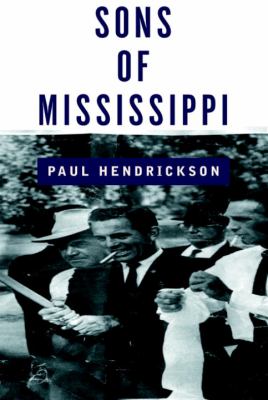
by Paul Hendrickson
Library Journal: Hendrickson (The Living and the Dead) uses a photograph published in the July 1962 Life magazine as a focus for examining race and racism in late 20th-century American society. The picture, taken in Oxford, MI, by Charles Moore, centers on seven white law enforcement officers. One, Sheriff Billy Ferrell, holds a billy club, while the other four look on smiling. These men were called to Oxford with others to curb anticipated violence accompanying the integration of the University of Mississippi by James Meredith. All seven participated in the riots that left two people dead and hundreds injured. Hendrickson uses the lives of these men to explore Southern racial attitudes of the period, giving us biographies of photographer Moore and of Meredith, whose interesting life since has included working as an aide to Sen. Jesse Helms. Hendrickson then extends the study to examine contemporary racial views through portraits of the lawmen's grandchildren and Meredith's son, Joe. Hendrickson uses a large number of interviews as well as archival materials and periodical literature to create a thoughtful and illuminating portrait of American racial attitudes. Highly recommended for all libraries.-Stephen L. Hupp, West Virginia Univ. Parkesburg Copyright 2003 Reed Business Information, Inc. Distributed by Syndetic Solutions Inc. Terms
Publishers Weekly: "Nothing is ever escaped," is the woeful reminder Hendrickson imparts in this magisterial group biography-cum-social history, a powerful, unsettling, and beautifully told account of Mississippi's still painful past. Hendrickson, author of the searching Robert McNamara chronicle The Living and the Dead (an NBA finalist), sets out to profile seven Mississippi sheriffs photographed while one of their number postures with a billy club just before the 1962 riots against the integration of the University of Mississippi at Oxford ("Ole Miss"). The picture, shot by freelance photographer Charlie Moore, was published in Life magazine soon after, and it captured Hendrickson's imagination when he came upon it decades later. Chapter by chapter, Hendrickson reconstructs the everyday existences of the seven sheriffs, concentrating on the time of the photo, but taking his subjects through to their deaths. None are now living, but Hendrickson interviewed former Natchez sheriff John Ed Cothram in the early '90s, and the Cothram chapters comprise a paradigmatically subtle and eerie portrait of the intelligence and banality of evil, and how it destroys individuals. The number of telling quotes, interviews with friends and family, primary and secondary sources, allusions to art and history, and gut reactions Hendrickson offers are what really make the book. He begins with a wrenching retelling of the Emmett Till lynching-seven years before James Meredith fought for and finally won admission to Ole Miss, a bloody story Hendrickson also recounts (in addition to a fascinating recent interview with Meredith himself). The book's final third tries to get at the legacy of Mississippi's particular brand of segregation-the whites and blacks Hendrickson interviews throughout articulate it masterfully-by profiling the children of the men in the photo and of Meredith, with sad and inconclusive results. While Hendrickson can be intrusive in telling readers how to interpret his subjects, he repeatedly comes up with electric interview material, and deftly places these men within the defining events of their times, when "a 100-year-old way of life was cracking beneath them." Copyright 2003 Reed Business Information, Inc. Distributed by Syndetic Solutions Inc. Terms
|